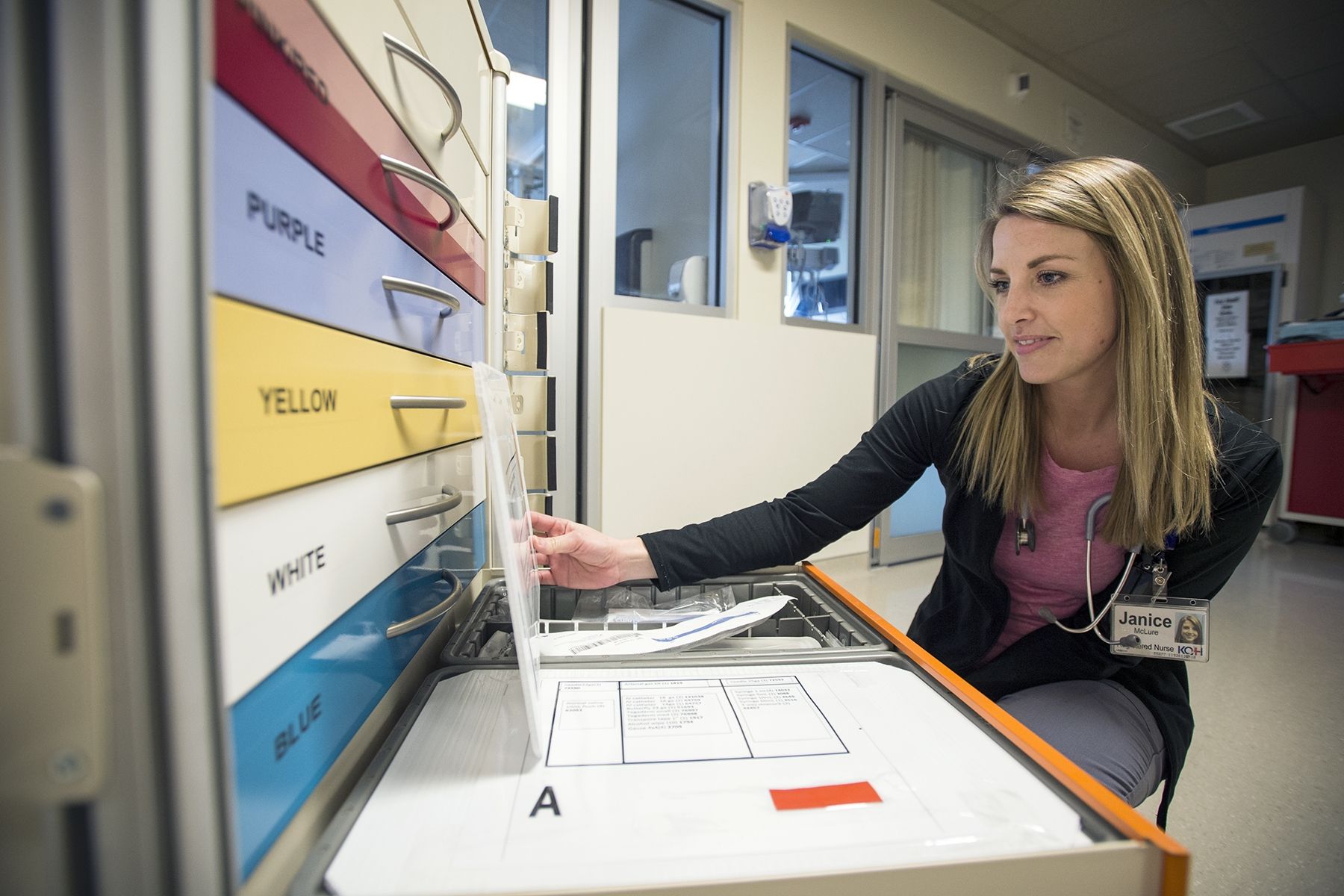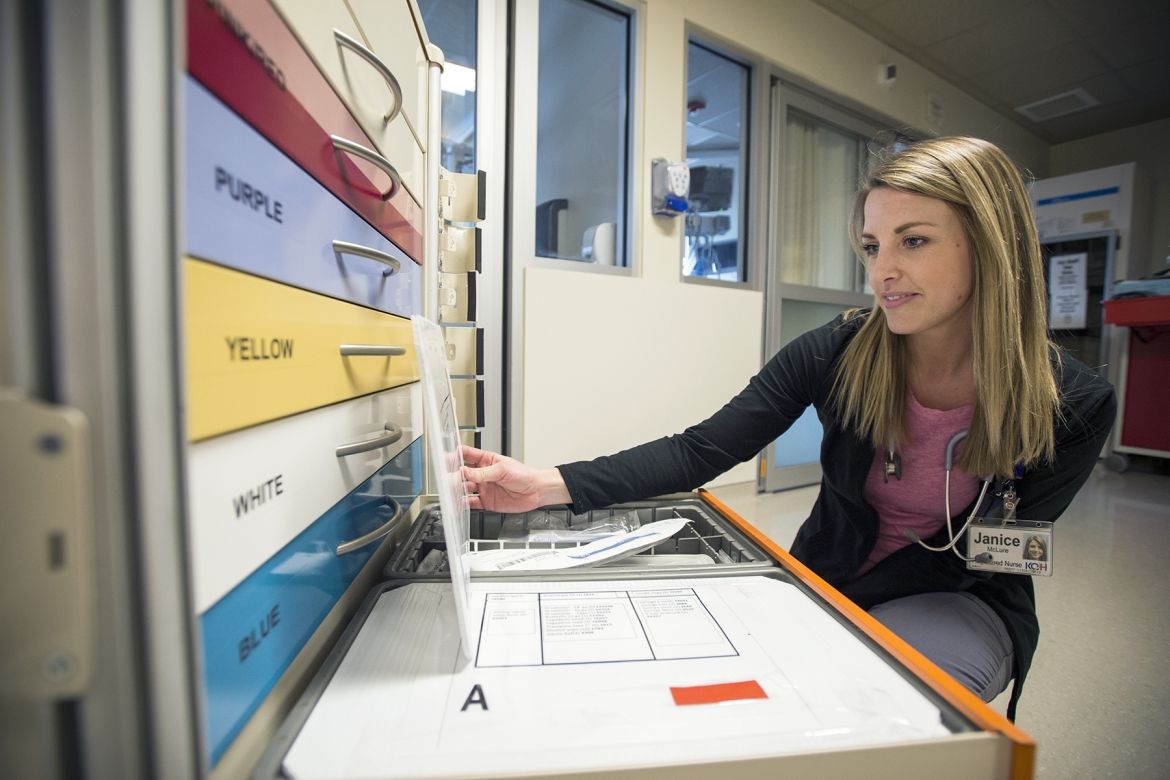Effective immediately masking is required for everyone when present on all inpatient units, in the Emergency Department (ED), the Urgent Care Centre (UCC), and the Children’s Outpatient Centre (COPC).

When a pediatric patient goes into cardiac arrest, every second it takes to respond is precious. That’s why Kingston General Hospital is putting into place a new tool that will make it easier for resuscitation teams to quickly provide lifesaving treatments.
“In 2013, we started to reevaluate pediatric intensive care services at KGH,” says Pediatrician Dr. Michael Storr. “We recognized the need to provide staff with tools to deal with the unique needs of critically ill toddlers and children.”
Starting this week, KGH is rolling out new pediatric “Rainbow” carts, which use a system that helps teams quickly find the right size of equipment to use on a child requiring high-risk care. The carts are equipped with a special measuring tape that is divided up into several coloured sections. Those colours on the measuring tape correspond to coloured drawers on the cart. Each drawer contains the correct size of equipment needed for that size of child.
This same approach, endorsed by the American Heart Association and in use in more than 150 children’s hospitals in North America, will help address the unique issues that come with pediatric patients.
“When an adult goes into cardiac arrest, health care teams follow very familiar and standard sets of protocols, but it’s much different for pediatric cases,” says Kerri-Lee Bisonette, Program Manager of Pediatrics and NICU. “With children, resuscitation is based on height and weight and since pediatric patients can range in size, it can be a challenge to select the right drug doses and the right size of equipment, like endotracheal tubes. This system will dramatically reduce time and anxiety that could be spent trying to select the right equipment.”
Five rainbow carts will be placed in key locations around the hospital to quickly respond to pediatric “code pink” cardiac arrest calls. They’ll be located in the Emergency Department, Kidd 2 Intensive Care Unit, Kidd 10 pediatrics, the Pediatric Oncology Outpatient Clinic and the Neonatal Intensive Care Unit. A team will respond with the closest cart when a code pink is called.
“A code pink is a relatively uncommon occurrence at KGH so it is important that when one is called, we have a team to respond with a specialized tool like the rainbow cart which will help our staff quickly identify how to provide the correct care for the patient,” says Bisonette.
The carts were designed following extensive consultations with staff from across the hospital including the Emergency Department, Materials Management, Pharmacy, Anesthesia and the KGH Resuscitation Committee.
“We’ve had good feedback across the hospital and there is widespread enthusiasm because our staff have realized this system improves our response when a child is experiencing a life threatening event,” says Dr. Storr.
As part of a partnership with Hotel Dieu Hospital, two carts are also now in place in it’s Children’s Outpatient Centre and the Urgent Care Centre.
Gallery


Registered Nurse Janice McLure checks out the new pediatric rainbow cart that recently arrived on Kidd 10.



